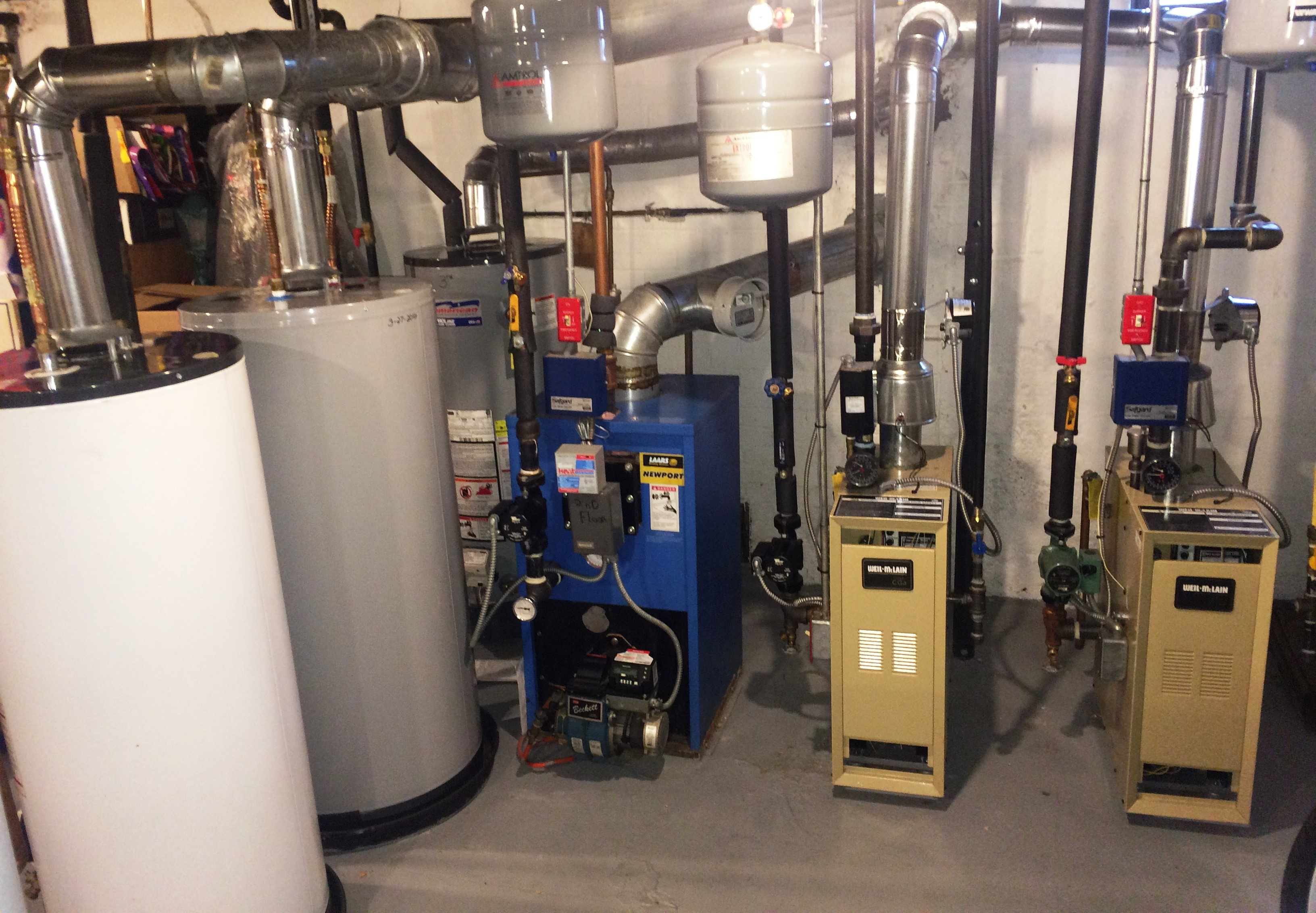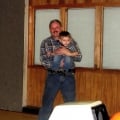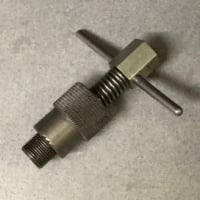Welcome! Here are the website rules, as well as some tips for using this forum.
Need to contact us? Visit https://heatinghelp.com/contact-us/.
Click here to Find a Contractor in your area.
If our community has helped you, please consider making a contribution to support this website. Thanks!
How small is too small to fire an Indirect?
Options
NTL1991
Member Posts: 107
This is my setup:

Lots of pipes into my chimney. 3 individual gas-fired water heaters, 2 gas-fired WM CGA-25 boilers and 1 Laars NP-85 oil-fired boiler. The Laars will most likely be replaced with a WM CGA-25 or equivalent when the time comes.
When the water heaters go, my preference would be to replace them with modestly-sized indirect heaters. Probably something like 30-gallon units. With priority control, would a small boiler like the CGA-25 (38MBH Net) be able to handle an indirect? Each water heater serves one ~1000 Sq ft apartment, 2-bed, 1-bath, washing machine, no dishwasher.
You can see the last vestige of the original one-pipe steam system: The trusty WM SGO-4 that was converted to hot water when the heating was split up for separate metering. It has since sprung a leak, and was replaced with a correctly-sized CGA-25. The Superior gas boiler (far right) was replaced with a CGA-25 as well. It was a really horrible boiler, standing pilot, noisy, and had a no-heat issue almost every season. AND it was 3x too big.


Lots of pipes into my chimney. 3 individual gas-fired water heaters, 2 gas-fired WM CGA-25 boilers and 1 Laars NP-85 oil-fired boiler. The Laars will most likely be replaced with a WM CGA-25 or equivalent when the time comes.
When the water heaters go, my preference would be to replace them with modestly-sized indirect heaters. Probably something like 30-gallon units. With priority control, would a small boiler like the CGA-25 (38MBH Net) be able to handle an indirect? Each water heater serves one ~1000 Sq ft apartment, 2-bed, 1-bath, washing machine, no dishwasher.
You can see the last vestige of the original one-pipe steam system: The trusty WM SGO-4 that was converted to hot water when the heating was split up for separate metering. It has since sprung a leak, and was replaced with a correctly-sized CGA-25. The Superior gas boiler (far right) was replaced with a CGA-25 as well. It was a really horrible boiler, standing pilot, noisy, and had a no-heat issue almost every season. AND it was 3x too big.

0
Comments
-
When you consider that a 30 -40 gal gas water heater has a 28k-40k btu burner, it becomes obvious that a 38k net boiler will provide the same with a 30 gal indirect. Put one on each apt., set it up on priority, and you'll be fine.
IDK about your locality, but around here, you can't vent different fuel fired appliances into the same flue.Bob Boan
You can choose to do what you want, but you cannot choose the consequences.3 -
That must be one tall chimney.
I don't like the baro's on the end of a tee, not code for oil. Also, the pancake reducers add alot of Total Equivalent Pipe Length to the fixtures.There was an error rendering this rich post.
0 -
I do not like those reducers either! And that draft damper on the Laars was corrected to what you see on the top pic. A bit better this way?
I wasn't sure if it was a true 1:1 relation between the gas-fired heater BTU rating and a boiler/indirect rating. That's VERY good news.
As far as height, it's a 3 story house. Haven't actually measured it, but I'd guess about 30'? It's an exterior chimney so I'm sure that's not helping things.
I'm pretty sure code here allows for oil and gas in the same flue. I see it a lot here in RI.0 -
Oil and gas I the same flue is sketchy to me, it's certainly not allowed where I live. I kinda like the decision to go with cast iron boilers instead of mod cons. What type of emmiters do you have?0
-
It's all fin-tube baseboard
 The runs to the 2nd and 3rd floors were made with 3/4" hePEX through stacked closets. The old WM was very good and I wanted to stick with something simple, dependable and high-mass.
The runs to the 2nd and 3rd floors were made with 3/4" hePEX through stacked closets. The old WM was very good and I wanted to stick with something simple, dependable and high-mass.
I did buy Dan's book Pumping Away, and I plan on relocating the circulators. I calculated the head loss of the 3rd floor loop with all the 3/4" PEX, copper and fittings and the supplied 007 wasn't enough. I ended up installing a 00R 3-speed and reversed the supply and return to better balance the heating (Hottest water to the end-of-loop living room with cathedral ceilings, and coolest water to bedroom nearest to the riser from the basement, which is also over-radiated. Worked perfectly!0 -
My fault, I didn't roll up to the first picture...yes baro correct.
Oil & gas in the same flue are permitted by NFPA 211, with some notable rules and regs. Just a snippet:
9.8 Interconnection
9.8.1 Connectors serving appliances operating under natural draft shall not be connected into any portion of a mechanical draft system operating under positive pressure.
9.8.3 Gas appliances and appliances burning liquid fuel shall be permitted to be connected to one chimney flue through separate openings or to be connected through a single opening, provided they are joined by a suitable fitting located as close as practicle to the chimney and provided both of the following apply:
(1) Sufficient draft is available for the safe combustion of each appliance and for the removal of all products of combustion.
(2) The appliances so connected are equipped with primary safety controls and all appliances are located in the same room.
9.8.4 If two or more openings are provided into one chimney flue, the following stipulations shall apply:
(1) They shall be at different levels.
(2) The smaller connector shall enter at the highest level consistent with available head room or clearance to combustible material.There was an error rendering this rich post.
0 -
Thank you! I'd imagine the level they enter the flue has to do with buoyancy of the combustion products? The hotter, more buoyant flue gasses lifting the cooler, heavier gasses that enter above?
I've heard a rule of thumb about oil being below gas when they enter the flue. While that's often correct (oil appliances are typically larger than the gas appliance in this situation, right?), it may not always be.0 -
Smaller to enter above simply to get more vent rise. Nothing to do with buoyancy of gases, etc. You are also allowed to manifold them before chimney. Install a Field Controls WMO-1 safety switch in the oil. Gas WH with draft hood should convert to bullhead tee with x2 baro damper with spill switches to WH and furnace if 80% common vented.1
-
I’m confused why you have so many boilers and water heaters Why not a single boiler and a larger 50 gallon indirect. With fin tube, you could use a condensing boiler, but I think for simplicity and reliability, a CI is still a better way to go. RI is mid-Atlantic climate, so I think design temp is maybe 10-15F. That makes boiler sizing smaller than other climates like norther Midwest or northern east coast.
With low mass like fin tube, best to use outdoor rest and run it at 140-160F most of the time except the coldest weather depending on radiation vs. heat loss. Rather than cycling it on and off and having the room temp swing up and down. With cast iron radiator you can cycle them because they stay hot for 15-20 minutes after shutdown. Fin tube will cool off a lot faster.1 -
@mikeg2015 , he said earlier in this post that this is a 3 unit apt. each on its own utility. Probably the best way to treat each unit and a single failure won't affect the entire building either. I have a 4 unit and each has its own heating system also. Works best for the Landlord and the tenant. Everybody pays for what they use. No questions.2
-
not supposed to have gas in an outside chimney I believe.0
-
Many, many, many of us have gas appliances vented into exterior chimneys. I suppose local codes determine that, to some degree but I suspect there are fewer municipalities that prohibit it than those that find it acceptable, if draw is good. Obviously interior chimneys are preferable.rickh said:not supposed to have gas in an outside chimney I believe.
0 -
Missed that part. That does make it simple. I agree with others that a small indirect should work fine with even a small boiler. You end up with similar capacity to a small gas fired WH.Fred said:@mikeg2015 , he said earlier in this post that this is a 3 unit apt. each on its own utility. Probably the best way to treat each unit and a single failure won't affect the entire building either. I have a 4 unit and each has its own heating system also. Works best for the Landlord and the tenant. Everybody pays for what they use. No questions.
Outdoor chimney is definitely an issue. Maybe this is a good application for a combi? Switch to PVC vents. Otherwise, power vent boilers and use stainless steel?
Could go to a single boiler and just use 3 secondary pumps with 2 zones on each, 1 for DHW. Then bill the unit based on a hour meter on each pump. Not as simple as utility bill I guess but reduces maintenance costs and venting issue goes away.
0 -
It is probably unlikely a tenant would argue with a bill from the gas company.
But for some, a bill from the landlord could cause some whining and phone calls. Having been down that road I would keep the 3 units.
Plus if one unit down the building might not freeze up with 2 others working. Common walls, floors, ceilings etc.0 -
You do know there is a limit as to how much you can vent into any given flue? What size is this flue? I don't see a metallic liner so I assume from the pic it is a tile (supposedly) lined exterior chimney. Your typical nominal 8x8 flue tile may be able to handle about half of what you have in that CAZ. Indirects will limit what has to exhaust up flue but still that's an awful lot. The code contradicts itself because it calls for the smaller to enter the flue above the larger yet it also allows for manifolding. Go figure. The reason the smaller goes above is simply to get more vent rise (straight out of Code Commentary).
1
Categories
- All Categories
- 87.4K THE MAIN WALL
- 3.2K A-C, Heat Pumps & Refrigeration
- 61 Biomass
- 429 Carbon Monoxide Awareness
- 120 Chimneys & Flues
- 2.1K Domestic Hot Water
- 5.8K Gas Heating
- 115 Geothermal
- 168 Indoor-Air Quality
- 3.7K Oil Heating
- 77 Pipe Deterioration
- 1K Plumbing
- 6.5K Radiant Heating
- 395 Solar
- 15.7K Strictly Steam
- 3.4K Thermostats and Controls
- 56 Water Quality
- 51 Industry Classes
- 50 Job Opportunities
- 18 Recall Announcements




